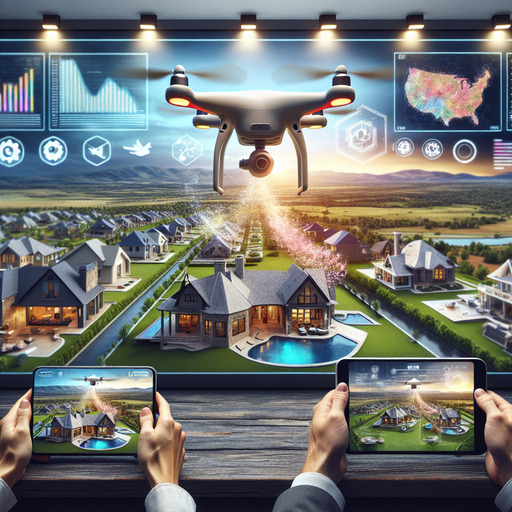
-
Table of Contents
Unlock the potential of your real estate listings with stunning drone video tours! Discover expert tips and techniques to captivate buyers and showcase properties like never before. Learn more here.
Introduction
In the competitive world of real estate, showcasing properties in the most appealing and comprehensive manner is crucial. One innovative method that has gained significant traction is the use of drones for real estate video tours. Drones, or unmanned aerial vehicles (UAVs), offer a unique perspective that traditional photography and videography cannot match. They provide sweeping aerial views, highlight property features, and capture the surrounding neighborhood, all of which can significantly enhance a property’s appeal to potential buyers.
How to Use Drones for Real Estate Video Tours: A Comprehensive Guide
Drones have revolutionized the real estate industry by providing an eye-catching way to showcase properties. Utilizing drones for real estate video tours can elevate a property’s marketing appeal, offering potential buyers a complete view that standard photography cannot match. To do this successfully, understanding video production, marketing, and editing is essential.
Choosing the Right Equipment
First, selecting the right drone is key. High-quality drones with advanced cameras and stabilization features ensure smooth, professional-grade footage. Models like the DJI Phantom or Mavic series are often recommended due to their reliability and excellent image quality. Along with the equipment, familiarizing yourself with local regulations and obtaining any necessary permits is crucial. Following aviation laws ensures safe and legal drone operations.
Planning the Video Shoot
Before starting, thorough planning is a must. Scout the property to identify key features and angles that highlight its best attributes. Consider the time of day and weather conditions—factors that can significantly impact the quality of the footage. Early morning or late afternoon light often provides the most flattering illumination, while clear skies ensure optimal visibility.
Video Production Techniques for Drone Real Estate Tours
When filming, smooth and steady movements are critical. Use the drone’s gimbal to maintain stability and avoid jerky motions. Begin with wide, sweeping shots to show the property’s location and surroundings. Gradually transition to closer shots that emphasize specific features like the architecture, landscaping, and any unique selling points. Incorporating a mix of aerial and ground-level footage can offer a well-rounded perspective.
Showcasing the Interior
In addition to capturing the exterior, showcasing the interior is equally important. While drones are usually used outdoors, they can also be used indoors with caution. Ensure the indoor space is well-lit and free of obstacles that could hinder the drone’s movement. Slow, deliberate movements are essential to avoid collisions and maintain a professional appearance.
Editing the Footage
Once you’ve captured the footage, the editing process begins. Editing is where raw footage is turned into a polished, engaging video tour. Organize the clips and select the best shots that highlight the property’s features. Use editing software like Adobe Premiere Pro or Final Cut Pro to trim, color-correct, and stabilize the footage. Adding background music and voiceovers can further enhance the viewing experience, providing context and emphasizing key selling points.
Marketing the Final Video
After editing, marketing the video is essential. Upload the video to real estate platforms, social media, and the property’s listing page. High-quality video tours can boost online engagement and attract potential buyers. Additionally, shorter teaser videos or promotional clips shared on social media can help drive traffic to the full video tour.
Q&A
- How can drones be used for real estate video tours?
Drones are useful for real estate video tours by capturing high-quality aerial footage, showcasing the surrounding area, and offering perspectives that traditional photography cannot achieve. The process includes planning the shoot, ensuring compliance with local regulations, using the right equipment, capturing various angles, and editing the footage to create a compelling video tour.
For more insights on real estate video tours, visit this resource on drone use in real estate.